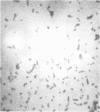Abstract
Gram-negative, non-saccharolytic, brown- or black-pigment-forming, nonmotile anaerboic coccobacilli, capable of decomposing hydrogen peroxide and identified as Bacteroides asaccharolyticus (B. melaninogenicus subsp. asaccharolyticus), were isolated from the supra- and subgingival plaques of beagle dogs with gingivitis or periodontitis. The organisms remained viable for many hours in an aerobic atmosphere as evidenced by their ability to grow subsequently in an anaerobic environment. They also grew well on agar media that were not reduced before use. Although blood was required for pigmentation of colonies, organisms grew on media that lacked hemin, menadione, blood, or reducing compounds. Increased oxygen tolerance, catalase activity, and different nutritional requirements differentiate these organisms from strains of B. asaccharolyticus isolated from humans.
Full text
PDF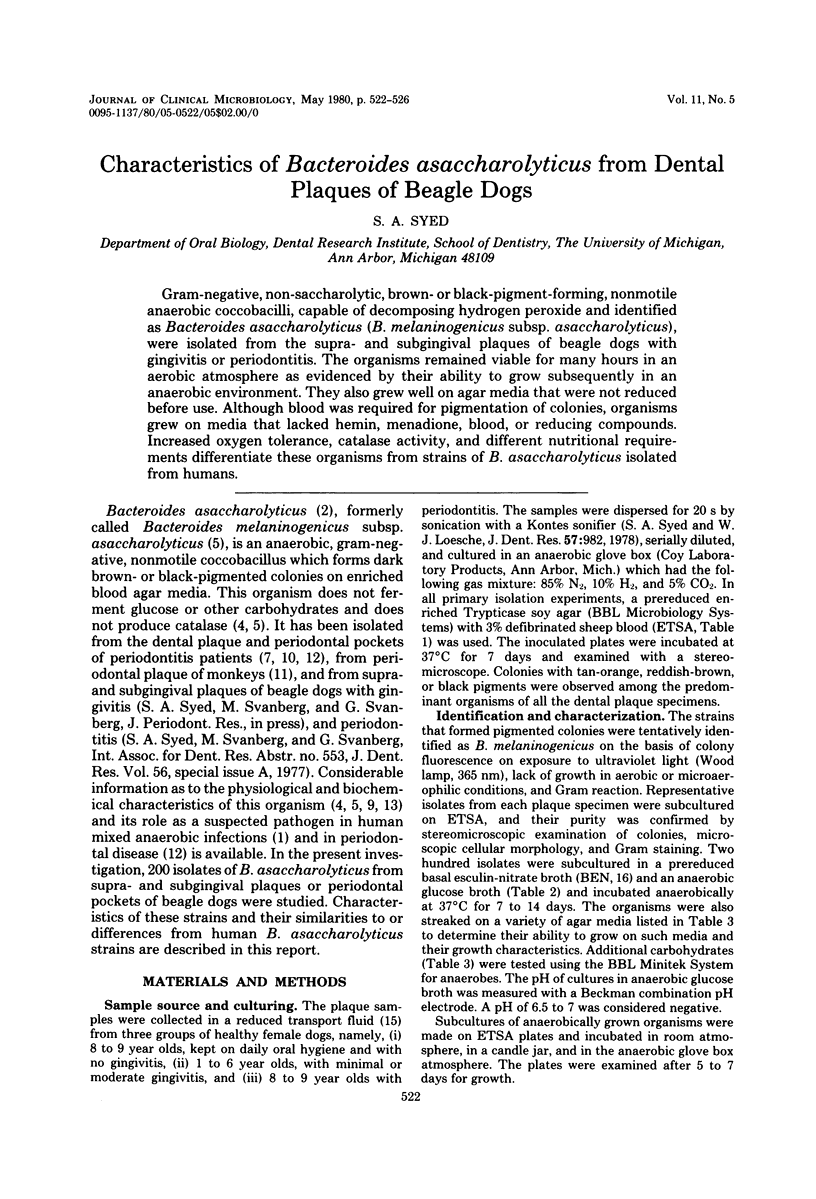
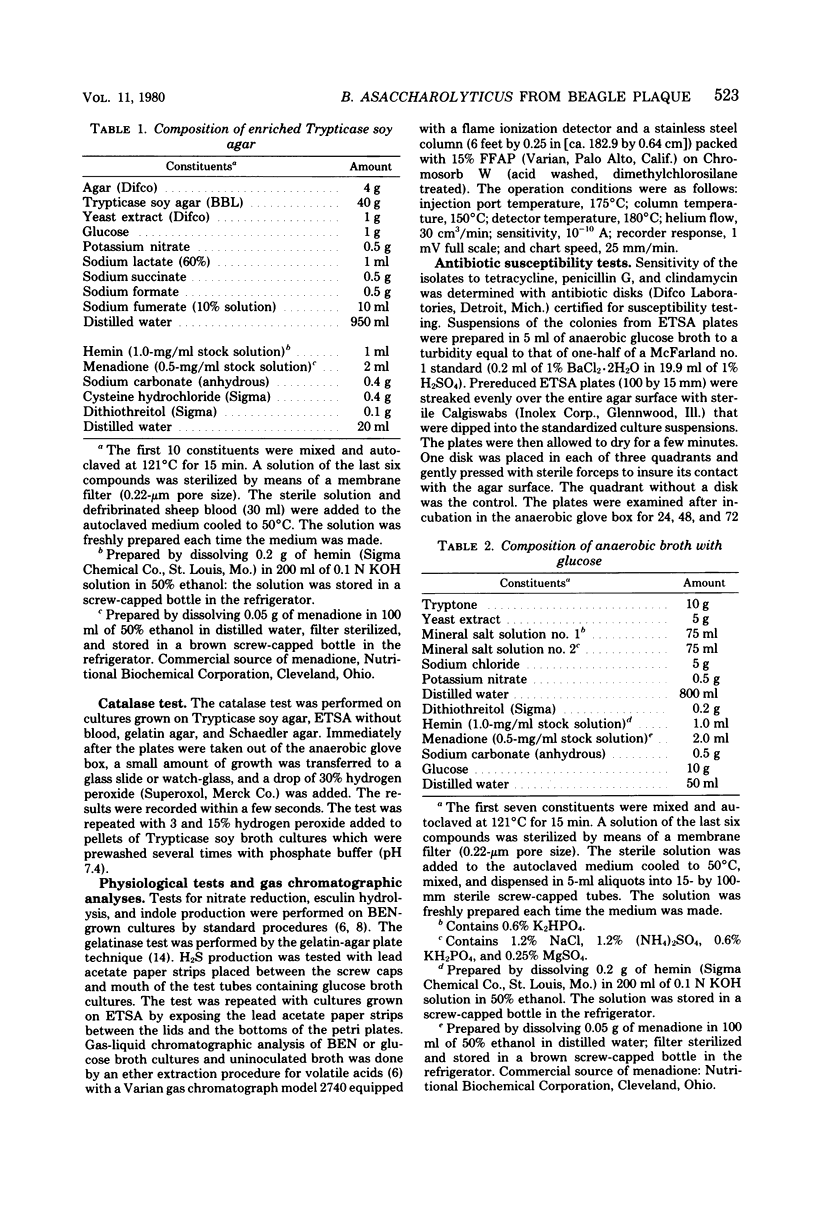
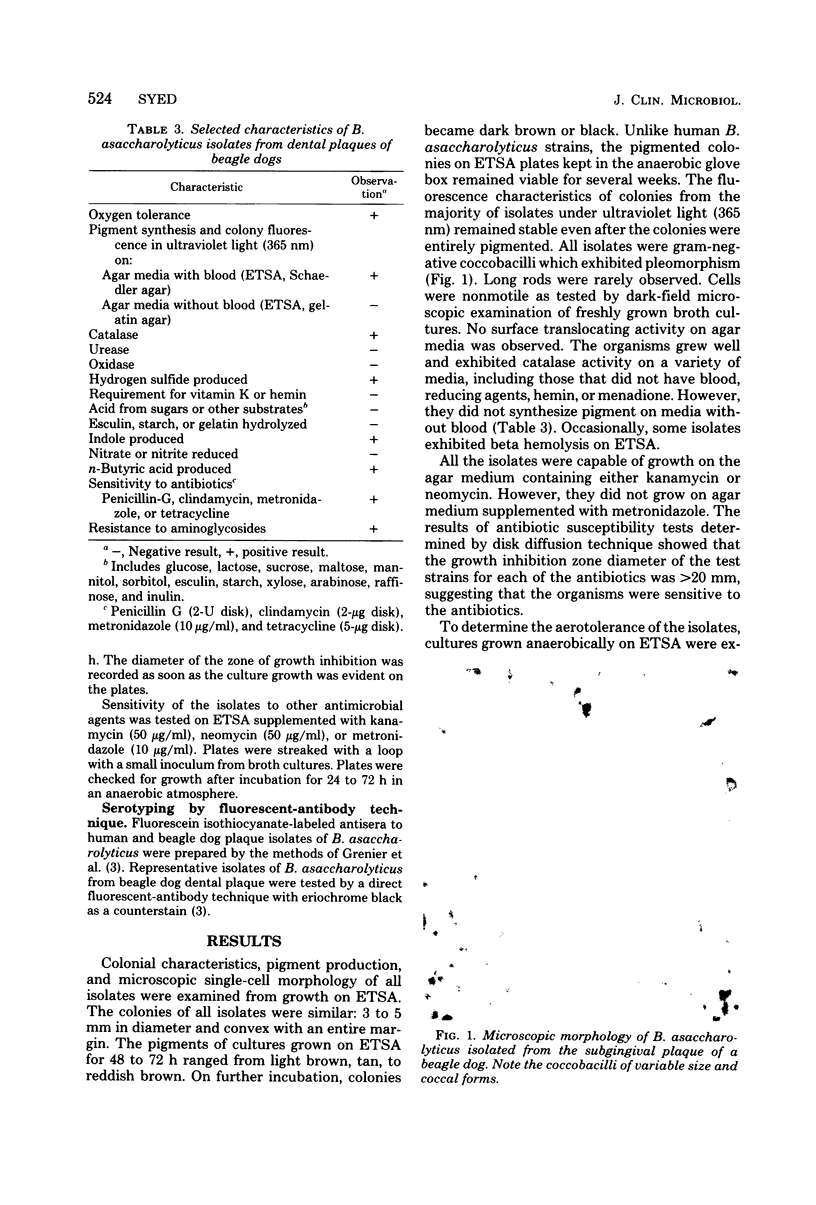
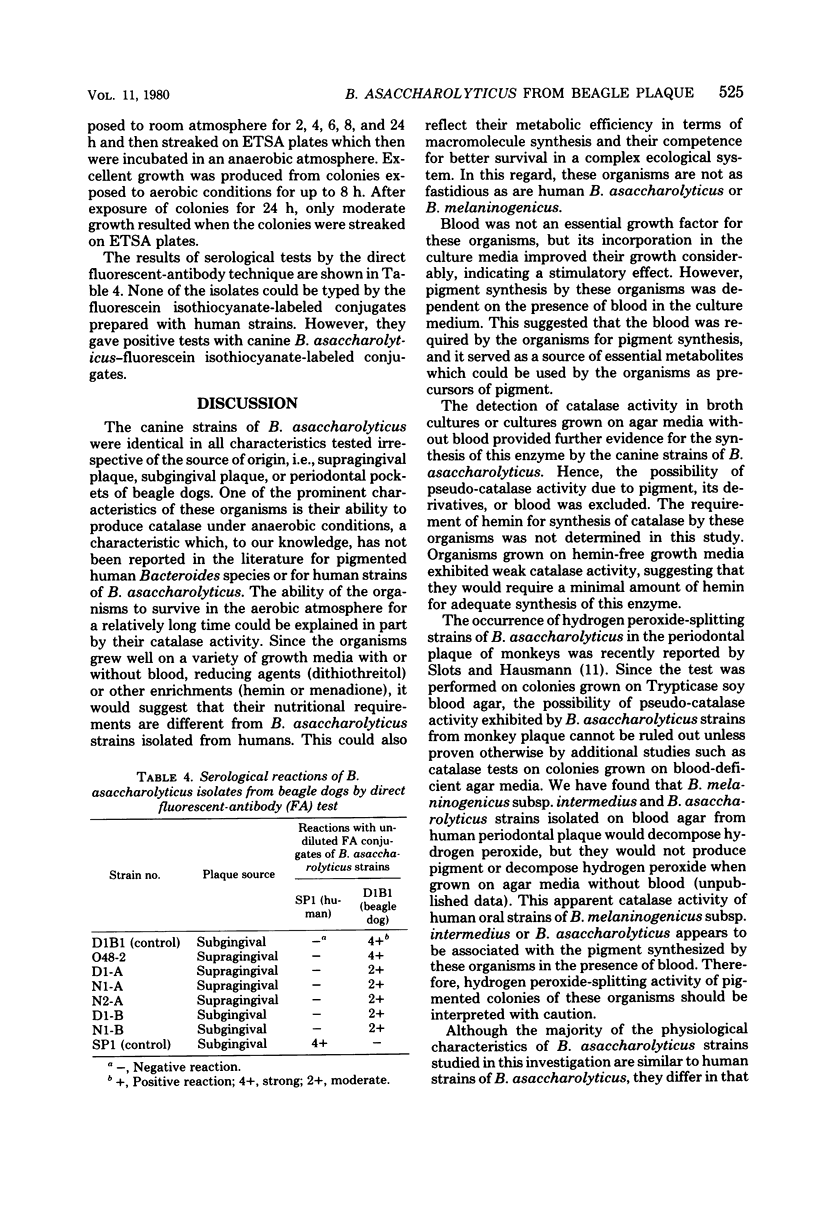
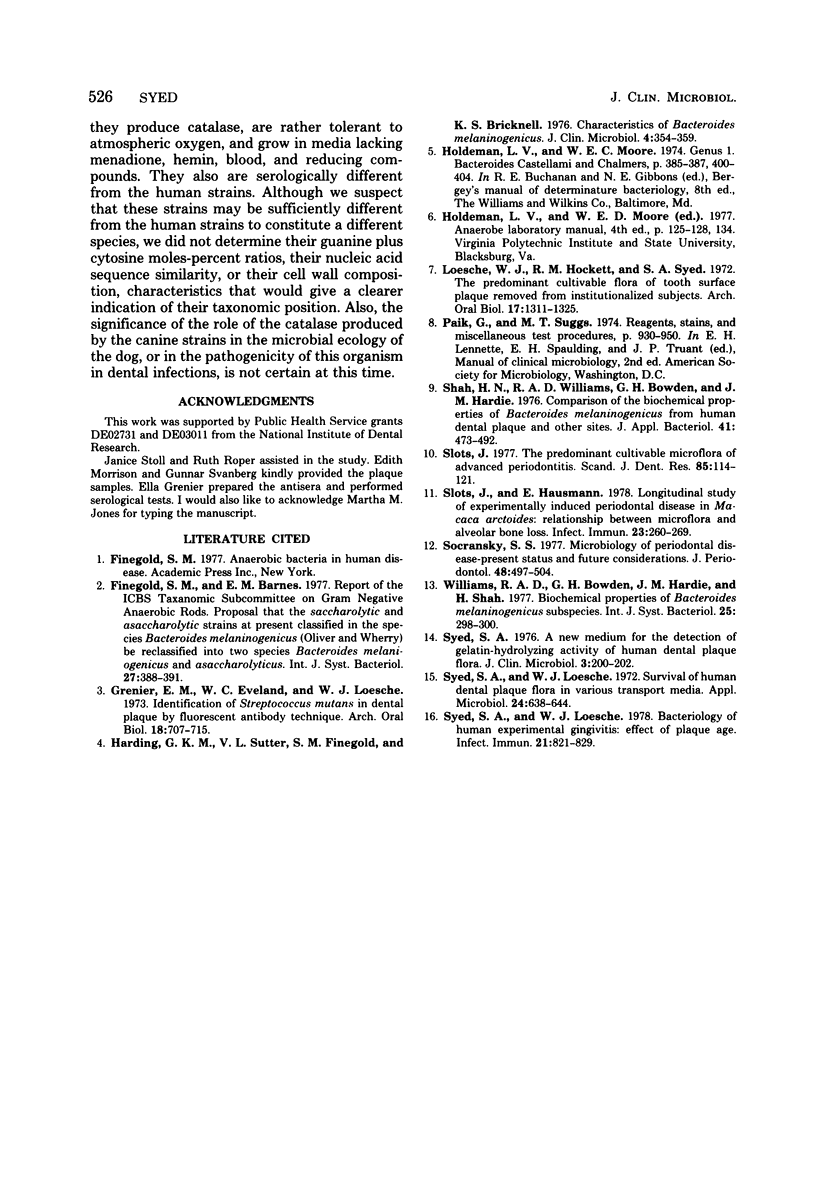
Images in this article
Selected References
These references are in PubMed. This may not be the complete list of references from this article.
- Grenier E. M., Eveland W. C., Loesche W. J. Identification of Streptococcus mutans serotypes in dental plaque by fluorescent antibody techniques. Arch Oral Biol. 1973 Jun;18(6):707–715. doi: 10.1016/0003-9969(73)90006-x. [DOI] [PubMed] [Google Scholar]
- Harding G. K., Sutter V. L., Finegold S. M., Bricknell K. S. Characterization of bacteroides melaninogenicus. J Clin Microbiol. 1976 Oct;4(4):354–359. doi: 10.1128/jcm.4.4.354-359.1976. [DOI] [PMC free article] [PubMed] [Google Scholar]
- Loesche W. J., Hockett R. N., Syed S. A. The predominant cultivable flora of tooth surface plaque removed from institutionalized subjects. Arch Oral Biol. 1972 Sep;17(9):1311–1325. doi: 10.1016/0003-9969(72)90164-1. [DOI] [PubMed] [Google Scholar]
- Shah H. N., Williams R. A., Bowden G. H., Hardie J. M. Comparison of the biochemical properties of Bacteroides melaninogenicus from human dental plaque and other sites. J Appl Bacteriol. 1976 Dec;41(3):473–495. doi: 10.1111/j.1365-2672.1976.tb00660.x. [DOI] [PubMed] [Google Scholar]
- Slots J., Hausmann E. Longitudinal study of experimentally induced periodontal disease in Macaca arctoides: relationship between microflora and alveolar bone loss. Infect Immun. 1979 Feb;23(2):260–269. doi: 10.1128/iai.23.2.260-269.1979. [DOI] [PMC free article] [PubMed] [Google Scholar]
- Slots J. The predominant cultivable microflora of advanced periodontitis. Scand J Dent Res. 1977 Jan-Feb;85(2):114–121. doi: 10.1111/j.1600-0722.1977.tb00541.x. [DOI] [PubMed] [Google Scholar]
- Socransky S. S. Microbiology of periodontal disease -- present status and future considerations. J Periodontol. 1977 Sep;48(9):497–504. doi: 10.1902/jop.1977.48.9.497. [DOI] [PubMed] [Google Scholar]
- Syed S. A. A new medium for the detection of gelatin-hydrolyzing activity of human dental plaque flora. J Clin Microbiol. 1976 Feb;3(2):200–202. doi: 10.1128/jcm.3.2.200-202.1976. [DOI] [PMC free article] [PubMed] [Google Scholar]
- Syed S. A., Loesche W. J. Bacteriology of human experimental gingivitis: effect of plaque age. Infect Immun. 1978 Sep;21(3):821–829. doi: 10.1128/iai.21.3.821-829.1978. [DOI] [PMC free article] [PubMed] [Google Scholar]
- Syed S. A., Loesche W. J. Survival of human dental plaque flora in various transport media. Appl Microbiol. 1972 Oct;24(4):638–644. doi: 10.1128/am.24.4.638-644.1972. [DOI] [PMC free article] [PubMed] [Google Scholar]



